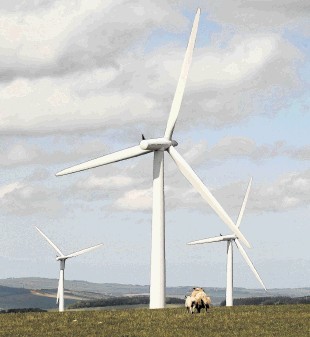
According to every test of opinion, there is general support in Scotland for the development of renewable energy. That should be a great platform for progress and relative consensus.
Instead, there seems to be permanent controversy about onshore windfarms, the unedifying falling-out of Messrs Salmond and Trump over offshore wind and most recently the Holyrood debacle of false claims about the number of jobs created by the renewables industry.
Most people want to believe that renewables is about more than just windfarms.
They also want to believe that this is a major growth industry for Scottish manufacturing. However, in seeking to encourage these aspirations, politicians must be careful not to mislead or to create false expectations.
It all tends to bear out an argument I have put forward in this column before – that while Scotland has a good story to tell on renewables, the biggest threat comes from excessive hype and a refusal to face up to genuinely difficult issues.
There is still an information deficit which extends to media as well as the wider public. I was struck, for example, by the reporting on television of Alex Salmond’s speech to the Scottish Renewables conference last month when he set a 50% target for 2015.
The obvious story would have been to translate this figure into the number of additional turbines required to meet the target. Personally, I don’t think it would be particularly daunting and there would have then been a clear proposition for public discussion to proceed around.
Instead, it was blithely asserted that we are “on the verge” of wave and tidal power becoming a player in the mix on a commercial scale which, as far as I know, is simply not true – certainly not before 2015.
And another story was thrown in about SSE’s plans for a large new hydro station which most definitely will not feature before 2015.
Take out these diversions and the new, improved target can be translated pretty directly into the number of onshore turbines.
There is no point in spinning the story otherwise in order to avoid arguing for the logical reality that target-setting entails.
The exaggerated claim about job numbers is another piece of pointless hype. I think most people would regard 11,000 jobs as quite a significant achievement for the renewables industry if even it can be taken at face value.
The lobbying organisation that provided it, Scottish Renewables, is certainly not in the habit of under-selling itself or the industry’s achievements.
Hiking the figure up to 18,000 without a shred of evidence to support it was just another hostage to fortune, bringing all such claims into further disrepute.
The same might be said of the fact that each new investment in renewables seems to be announced at least three times, and some of them never happen at all.
The public starts to notice such things.
Perhaps the biggest flight from reality involves the central question of who is paying for all of this – and who is going to do so in the future.
The straightforward fact is that consumers throughout Great Britain are paying because we have trading and transmission arrangements which cover what is, at present, a single country.
Even then, the additional share of electricity bills that will be attributable to renewables subsidy is becoming a cause for concern.
This cannot just be ignored – and neither can the fact that the viability of Scottish renewables is absolutely dependent on the tolerance of English consumers who might, in other circumstances, decide that they can get their low-carbon electricity cheaper elsewhere.
I live now on Lewis and all of the hype and exaggerated claims are in particularly marked contrast to what is actually going on there.
After more than a decade of the issue being pretty clear, there is still not resolution of the transmission charging stand-off. Meanwhile, SSE has almost doubled the cost of a sub-Minch cable to £750million.
There is, I believe, a clear solution to the impasse – which would be for the Scottish Government, with DECC agreement, to set a new “offshore islands” ROC band, at half-way between onshore and offshore levels.
That would both fund the cable and avoid the need to challenge Ofgem’s orthodoxy on locational charging.
Unless this or some other solution is quickly found, there is the real prospect of the cable project being abandoned and the entire renewables capacity of the islands, both onshore and offshore, staying stranded.
It is difficult to square all the target-setting and promises of economic transformation with the very different reality of what, year after year, has been holding back renewables developments on my own doorstep, where the island economy desperately need them.
I am a long-standing supporter of renewable energy as a vital component in our energy mix as well as a potential creator of employment and investment in fragile rural economies.
However, it is delivery that matters – and it is essential that the rhetoric and reality roughly coincide – which is not always the case at present.
Recommended for you
